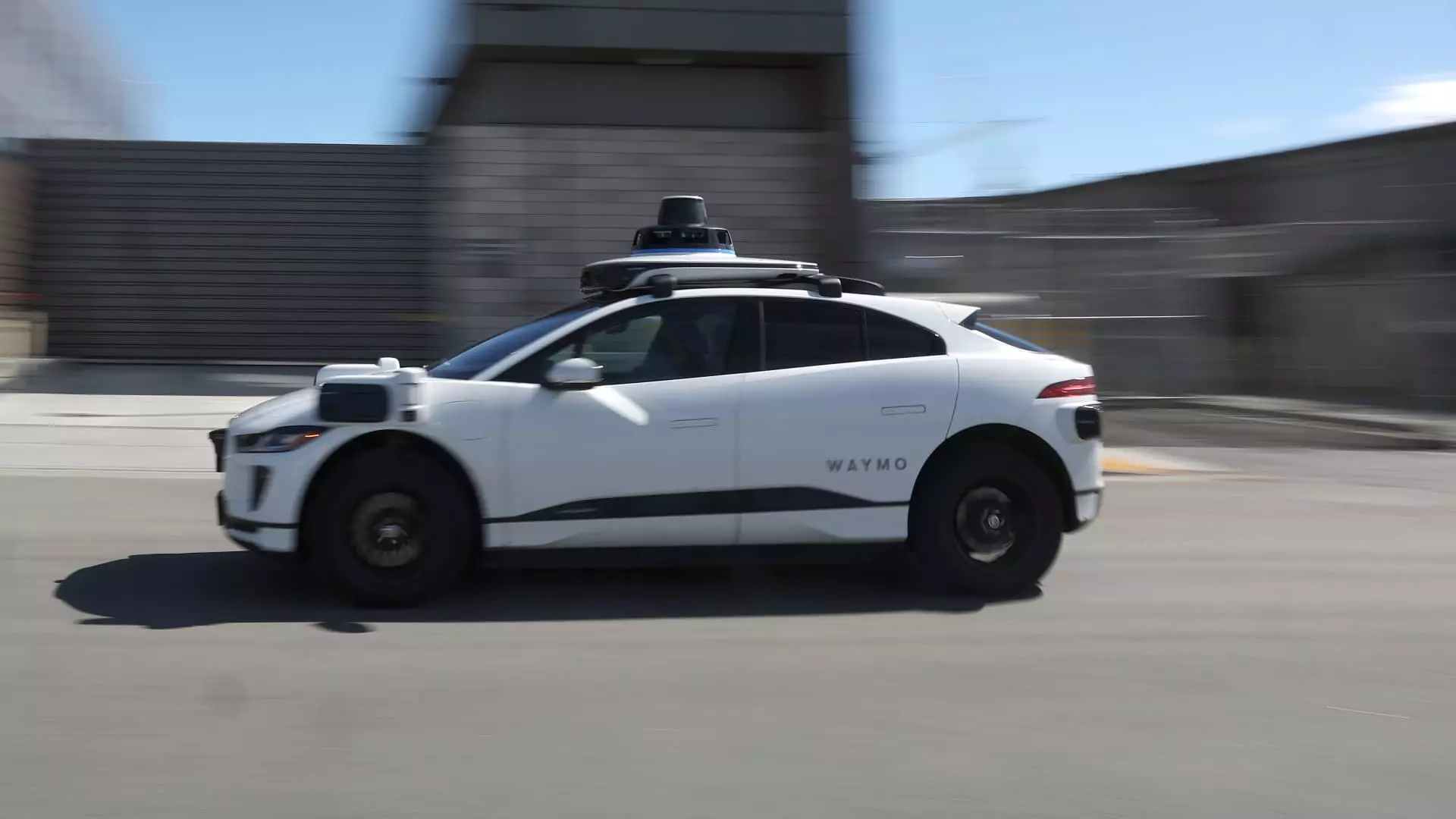The recent introduction of Waymo’s robotaxi service in Austin, Texas, marks a landmark moment not only for the company but for the evolution of urban transport as we know it. With around 300,000 attendees expected for the renowned South by Southwest festival, Waymo cleverly times its launch to thrust its driverless technology into the public spotlight. It’s a strategic move that positions Waymo at the forefront of the autonomous vehicle (AV) race, particularly as it partners with Uber to expand its services.
Austin’s bustling urban landscape is the ideal testing ground for Waymo’s vision of the future. Wealthy in diversity, the city is home to a vibrant technology sector, making it a fitting venue for a platform that seeks to redefine mobility. The city’s annual influx of visitors means that a breadth of individuals—local residents, festival-goers, and tech enthusiasts alike—will soon be able to experience the potential of driverless ridesharing. However, while Waymo’s emergence is exciting, it raises pertinent questions about safety, ethics, and the future of transport in our increasingly digital world.
Waymo’s strategic integration with Uber represents a compelling yet controversial collaboration. Unlike previous deployments in Phoenix, where Uber did not manage the fleet, this partnership gives Uber not just a seat at the table, but also effective control over dispatching Waymo’s vehicles. While this synergy promises enhanced operational capability and efficiency, it also invokes skepticism. The history of Uber, marred by safety controversies and a checkered past with autonomous technology, raises concerns about the reliability and safety of rides generated through this partnership.
By embedding Waymo’s technology into Uber’s platform, both entities will have to be accountable for ensuring seamless rides that adhere to safety standards. This accountability balance could either bolster public trust in AVs or further erode it, depending on how the partnership navigates potential incidents. After all, Uber’s former autonomous vehicle unit was disbanded following its association with tragic events, underscoring the delicate nature of merging innovation with responsibility.
Waymo’s arrival in Austin sets the stage for a fierce competition with Tesla, which has announced plans to launch its own driverless rideshare service. This rivalry is particularly engaging as both companies command substantial market influence. While Waymo has taken great strides in deploying fully autonomous vehicles, Tesla’s offerings still rely on a human driver for ultimate control. This distinction is crucial for consumers assessing the safety of these ridesharing options.
Waymo stands as one of the foremost leaders in self-driving technology, serving over 200,000 paid rides per week across metropolitan areas like San Francisco and Los Angeles. On the contrary, Tesla’s autonomous system still treads carefully, requiring a driver at the wheel. As the two juggernauts go head-to-head, the battle will likely sharpen technological advancements but may also sow confusion for consumers who crave clarity in a landscape buzzing with buzzwords like “fully autonomous” versus “partially automated.”
Waymo’s foray into Austin promises a glimpse at what the future may hold for electric, autonomous transport. Riders will have the chance to traverse 37 square miles, accessing major neighborhoods and landmarks. The partnership with Uber expands beyond simple transportation; it fosters a hybrid model that aligns with modern urban living, prioritizing electric vehicles while ditching traditional gas-guzzlers.
However, romanticizing the electric future comes with its own set of challenges. Will cities be prepared for the infrastructure required to support a fleet of autonomous vehicles? There are legitimate concerns regarding data privacy, road behavior, and the existing legal frameworks that govern the current transport system. Fostering an unbiased thoroughfare towards this technological utopia requires collaborative effort from regulators, manufacturers, and society at large.
The excitement surrounding Waymo’s robotaxi service in Austin is palpable. Yet, intertwined with that excitement is a miasma of concerns ranging from operational challenges to ethical dilemmas. As we stand on the precipice of a new era in urban mobility, the choices made today will irrevocably shape the landscape of tomorrow’s transportation—a landscape that future generations will either thrive in or struggle against.

